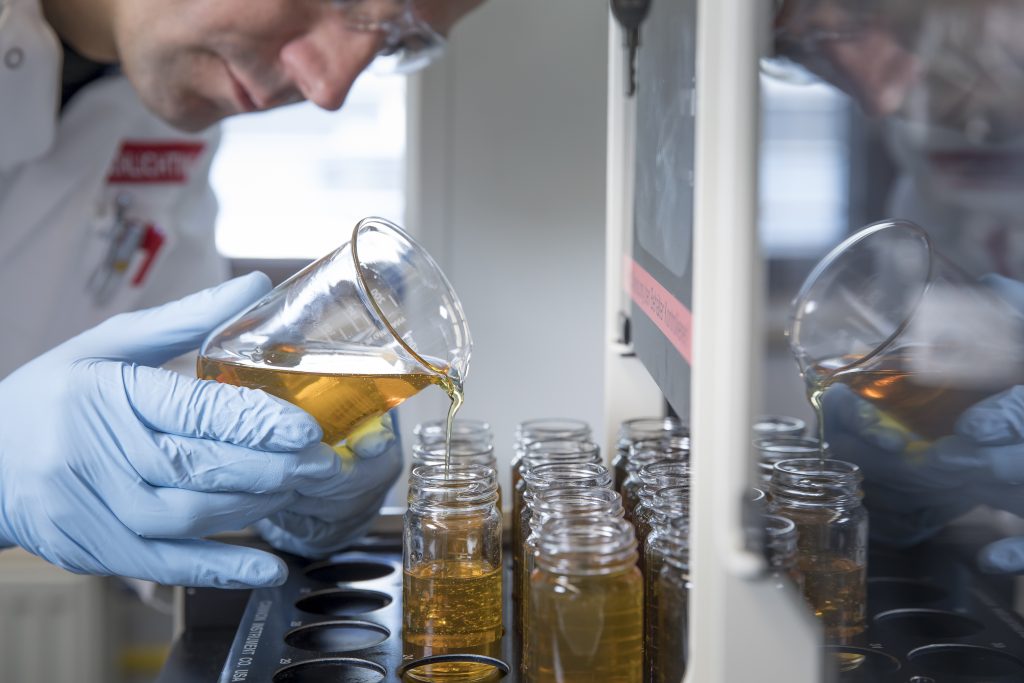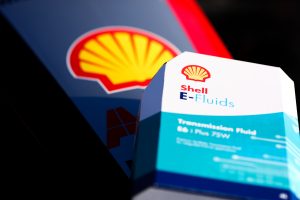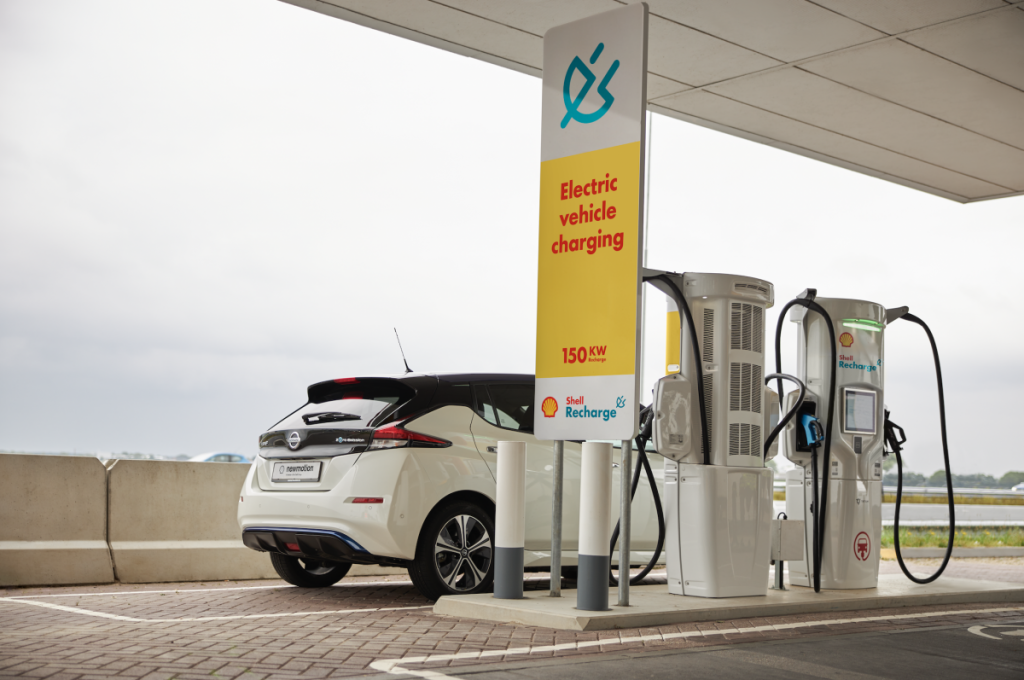Shell has spent more than a century building up one of the largest oil and gas companies in the world. It is now transitioning that empire for a new era of sustainability and electromobility, pouring in vast amounts of funding and manpower to develop electric vehicle (EV) fluids and charging infrastructure. This new direction could prove a lucrative one, providing established players like Shell move quickly.
“The race for electrification is on, and we see the pace picking up,” says Global Head of E-Mobility, Matt Porter. In Shell’s case, the race is a literal one in the form of Formula E. The company has spent three seasons as Official Partner to the Nissan e.dams team and is actively working with the race team to better understand the benefits of new EV transmission fluids on performance. The underlying aim is to use the racetrack as a test bed for technology that will eventually make its way into road-going vehicles.
Innovation from racing
“In order to transmit torque and power to the wheels in an EV you need a gearbox, and a gearbox needs lubrication,” says Shell’s E-Fluids R&D Project Leader, Chris Dobrowolski. Lubrication is one area that Formula E teams are allowed to adjust. “The beauty of electric racing is that we have more freedom when it comes to formulating the lubricant. We don’t need to think about commercial aspects—it is all about performance.”

But singling out the performance contribution made only by the lubricant is tricky. “Essentially that is the first challenge we have when developing bespoke fluid,” says Dorothea Liebig, Shell’s Delivery Manager of E-Mobility. The Shell Technology Centre (STC) in Hamburg houses development teams working on bespoke Formula E race products, serving as the centre of expertise for fluid delivery. “Just the lubricant itself will have a small percentage increase on system level efficiency, but essentially you are really looking at what it means on recuperation,” she explains. “If you can recuperate more efficiency you will achieve a higher range. Even a small bit will give you a competitive advantage. The team is always keen to identify ways to boost the formulation to deliver even a little more.”

The Hamburg team looks specifically at areas such as prototype fluid properties, ageing mechanisms and behaviour under higher temperatures. Initial tests are carried out on just the gears or the bearings; if results are promising they will move on to system level evaluations. All of this requires close collaboration and trust among partners. “In this case we are designing to Nissan’s individual needs and require access to the gearbox, knowledge on how the hardware works and specific parts function,” elaborates Dobrowolski. “We need to understand how the whole car works on a system level. You can only achieve system optimisation when all the parts are optimised. That means trusting each other, being open in terms of how the design is ongoing.”
The final stage is putting the new fluid in a car for a race. The latest such milestone took place in May this year, when Shell introduced a bespoke transmission fluid with the new Nissan e.dams Gen2 Formula E powertrain that raced in Monaco.
Beyond the track
For Dobrowolski, there’s a next step after that: finding applications for these racetrack innovations within road vehicles. “I see both sides of the industry with my job,” he tells Automotive World. “On a daily basis I’m dealing with OEMs to find product solutions for on-road use while at the same time I’m also dealing with the motorsport side. The beauty is that I can obtain knowledge from both sides and see what components fit best in the two worlds.”
E-mobility is clearly coming to road vehicles. While specific forecasts vary they all agree on the direction of uptake, and that’s steadily upward. Shell not only develops fluids for EVs but it is also providing charging stations for homes, businesses and forecourts. “We recognise that the way in which customers provide energy to their car is changing,” says Dobrowolski. “Today most people still fill up with gasoline on the forecourt but that will change with electromobility. We want to be there with them on that journey.”

Like other players in the charging sector, Shell is putting considerable effort into the charging experience, starting with addressing reliability, accessibility and affordability. “Going forward we need to differentiate and come up with different customer experiences to innovate and trial,” promises Porter. In terms of figures, it aims to have 500,000 charging points in place by 2025, all of which provide a fantastic user experience. This network, it believes, will provide greater choice and freedom for consumers on their own EV journeys. “We want to enable as many different people to drive as many different EVs as possible,” Porter adds. “That means removing the barriers people feel in terms of range anxiety.”
The Hamburg STC is also exploring charging innovations, including the payment process. Teams are specifically looking into automated billing between the vehicle and the charger. “The idea is to remove the hassle of the payment process,” Liebig emphasises. “You won’t need apps on your phone or cards in your wallet. It will be much easier and faster.”
The race for electrification is on, and we see the pace picking up
Work is also underway on fast-charging, targeted at those EV drivers taking longer trips. “With limited time for charging, the key enablers here are ease of access and speed of charging,” says Liebig. In collaborating with Ionity, Shell is offering chargers that promise 350km of range in just 15 minutes. It is also working with universities worldwide to increase charging speed.
Meanwhile, the company is keeping a close eye on other trends and innovations emerging from different corners of the wider mobility ecosystem. For instance, wireless EV charging. On this front it is participating in the UK government-sponsored WiCET (Wireless Charging of Electric Taxis) trial, which will evaluate wireless charging on a fleet of electric taxis for six months. “We are tracking wireless charging but don’t see it as economic currently,” Porter tells Automotive World. “We continue to monitor future trends and disruptions regularly.”
Only by taking such a proactive and flexible approach can this oil giant, and others like it, hope to find solid footing in the emerging clean mobility ecosystem.



